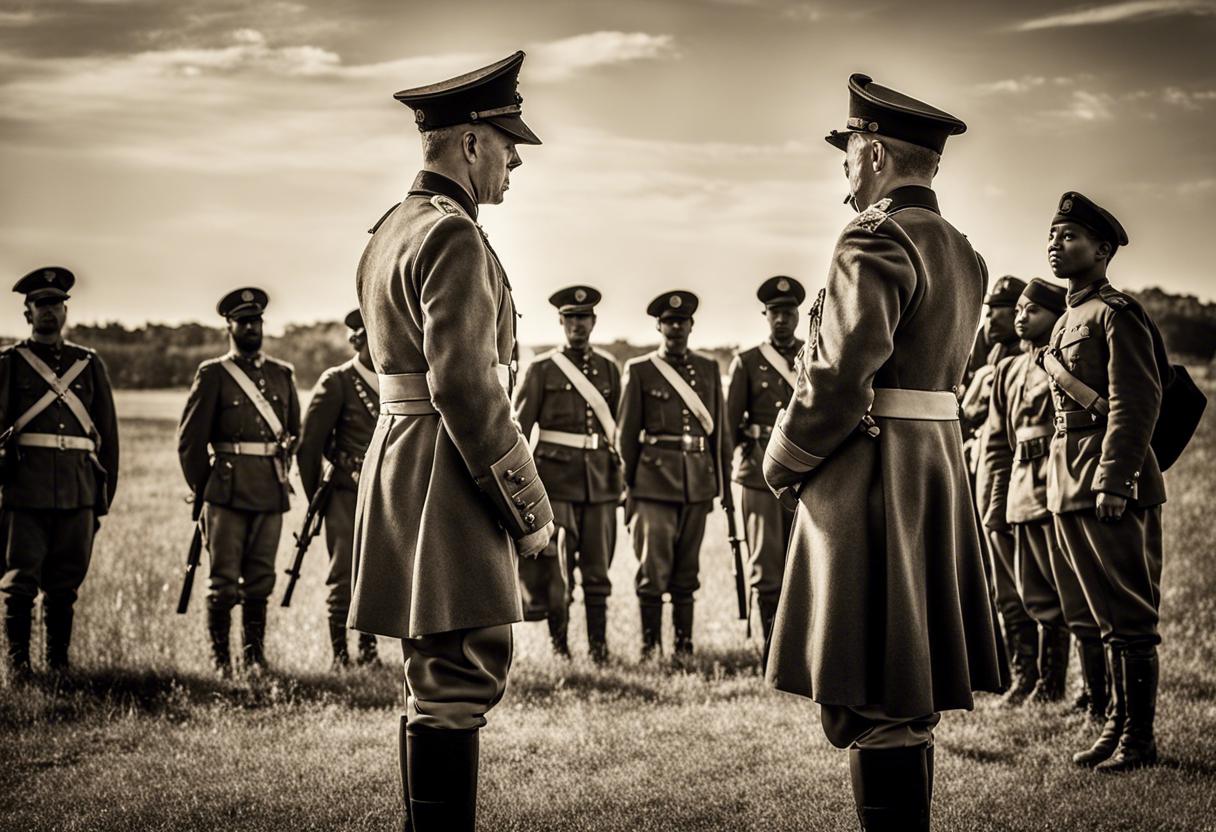A significant Celtic cross monument dedicated to Francis Patrick Duffy, a man who selflessly dedicated his life as an army chaplain and a priest, stands tall in Midtown Manhattan. Having been established in 1937, the imposing structure features a green granite cross soaring above seventeen feet and a nearly eight-foot bronze effigy of Father Duffy himself located in front.
The statue illustrates Father Duffy in his military attire, clutching a bible and looking ahead purposefully. A Doughboy helmet lies at his feet and the engravings simply state “Father Duffy.” The square where this monument resides, at the northern tip of Times Square, was renamed Father Duffy Square to honour him in 1939. However, these days, it is commonly known as Duffy Square.
The history of Father Duffy is meticulously carved into the green granite’s reverse side, encapsulating his notable exploits as a military officer. The engraving acknowledges Lieutenant Colonel Francis P. Duffy’s service to both his faith and his nation, from his birth on May 2nd, 1871, until his death on June 26th, 1932. It also honours his liturgical duties as a Catholic Priest and as a Chaplain 165th US Infantry, Old 69th NY.
The inscription further details the numerous battles where he ministered his regiment and the various military decorations he received throughout his service. His service extended through times of conflict, such as the Spanish-American War, the Mexican Border War, and World War I.
In spite of his time spent as an educator and pastor to parish congregations, Father Duffy’s service with the 69th regiment remains his most enduring legacy. Following his ordination in 1896, he started teaching philosophy at a Yonkers seminary and took up editing a seminary-based journal. Father Duffy was later allocated to a Bronx parish where he held services in a store due to the absence of a church. In 1914, he was appointed chaplain of the 69th Infantry Regiment of the New York National Guard, subsequently termed “the Fighting 69th”. The regiment, established in 1849, was greatly popular among Irish-Americans and Irish expatriates. Today, their mascot remains the Irish wolfhound.
Once the US joined the global conflict in 1917, the 69th Regiment, later rebranded as the 165th Infantry Regiment, was stationed in Long Island for preparation before departing for France in November of the same year. Serving as their chaplain, he risked his own safety to assist the sick and dying soldiers in the treacherous terrains of no man’s land and the battlefield.
The regiment faced substantial losses, with nearly a quarter of the 3,500 participants losing their lives. Despite reinforcements from different backgrounds, the group maintained its Irish heritage. The latecomers were labelled as “Irish by adoption, Irish by association or Irish by conviction” by Father Duffy.
In 1940, “The Fighting 69th”, a film telling the narrative of the regiment, stared James Cagney, with Pat O’Brien playing Father Duffy, referred to as the “valiant combat chaplain”. Diverging from reality, O’Brien employed an Irish accent in the film, while Father Duffy, a Canadian-born offspring of Irish immigrants, possessed a North American accent.
Post-war, Father Duffy authored a book, “Father Duffy’s Story”. He humbly asserted that the book merits only in its authenticity and was primarily written with the men who fought in France in mind. His valour was acknowledged via several awards including the Distinguished Service Medal, Distinguished Service Cross, Conspicuous Service Cross, as well as the French honours of Légion d’honneur and Croix de Guerre.
In 1921 he was appointed pastor of the Holy Cross church in Hell’s Kitchen located a stone’s throw from Times Square. Aware of the demands on his parishioners, he introduced novel pastoral measures such as Day-care facilities and 2.30am mass for night workers, a service that became known as “the printers’ Mass”.
The passing of this individual occurred in the month of June of 1932. A large crowd enveloping the streets was the result of his memorial mass, which was organised at St Patrick’s Cathedral, located on 5th Avenue. The ceremony within was attended by over a thousand delegates from the military and naval forces, in addition to governmental as well as state officials and city administrators. His nine-year companion, a horse named Captain, was also part of the funeral procession. Cardinal Hayes gave a tribute, defining Fr Duffy as the “paragon of a chaplain and a clergyman of a parish”.
Upon his death, his family was presented with a section in Arlington National Cemetery for his eternal slumber, however, they made the decision of favouring a graveyard in Bronx instead. His tombstone, interestingly, exhibits a harmonious parallel with the memorial near Times Square by featuring a Celtic cross that is engraved with “Father Duffy”.

